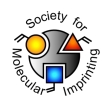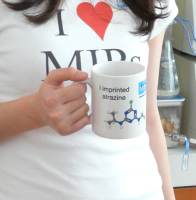Authors: Li S, Fang L, Ye MM, Zhang Y
Article Title: Enhanced adsorption of norfloxacin on modified TiO2 particles prepared via surface molecular imprinting technique.
Publication date: 2015
Journal: Desalination and Water Treatment
Page numbers: 1-11.
DOI: 10.1080/19443994.2015.1027279
Abstract: For norfloxacin removal in aquatic environment, TiO2 particles (P25) were modified via surface molecular imprinting technique to improve the adsorption property and sustainable use by photocatalytic regeneration. Orthogonal experiment was adopted to quantify the significance of preparation factors and determine the optimum preparation conditions. The adsorption of norfloxacin on the molecular imprinted particles (MIPs), the non-imprinted particles (NIPs), and P25 fitted the second-order adsorption model and Langmuir model well. The MIPs showed a higher adsorption capacity toward norfloxacin than the NIPs and P25. The adsorption rate constant, maximum adsorption capacity, and Langmuir constant of the MIPs toward norfloxacin were 0.49 g mg-1 min-1, 2.99 mg g-1, and 2.4 L mg-1, respectively. Removal efficiencies for norfloxacin, ciprofloxacin, carbamazepine, and phenol by the MIPs were 76.99, 78.81, 7.87, and 2.68%, respectively, which indicated that the MIPs had higher affinity toward norfloxacin and fluoroquinolones with similar structures. Moreover, the MIPs exhibited the photocatalytic property and could be regenerated by UV irradiation with stable removal efficiency for norfloxacin in five adsorption-regeneration cycles
Author keywords: Surface molecular imprinting technique, Adsorption, Photocatalytic regeneration, Norfloxacin



Join the Society for Molecular Imprinting

New items RSS feed
Sign-up for e-mail updates:
Choose between receiving an occasional newsletter or more frequent e-mail alerts.
Click here to go to the sign-up page.
Is your name elemental or peptidic? Enter your name and find out by clicking either of the buttons below!
Other products you may like:
 MIPdatabase
MIPdatabase









